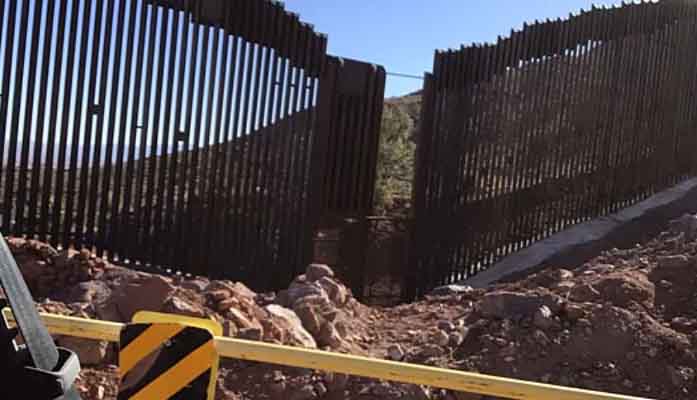By Corinne Murdock |
On Thursday, the Department of Homeland Security (DHS) announced it would close preexisting border wall gaps, but only after ensuring environmental stewardship. This is continuation of a departmental practice dating back well over a decade, one DHS hasn’t expedited or circumvented despite the ongoing border crisis. If DHS maintains similar pace from recent environmental stewardship reviews, it may be well over a year before these gaps are addressed.
The four gaps addressed will be along the incomplete border section in Border Patrol’s Yuma Sector.
The environmental stewardship in question has been a DHS goal since 2008, when Customs and Border Patrol (CBP) introduced an Environmental Stewardship Plan (ESP) and a Biological Resources Plan (BRP) to analyze the potential environmental impacts of border security construction, or tactical infrastructure (TI). Present protocol requires the development of an ESP before commencing the project. One of the latest ESPs was issued in November 2020 for construction announced in May 2019.
Included within an ESP are recommended construction practices to mitigate potential environmental impacts, or Best Management Practices (BMP) and Conservation Measures (CM).
Past DHS reports on environmental stewardship ultimately concluded that the positives of a border wall preventing foot traffic from illegal crossings, thereby preserving natural habitats and species, outlasted the negatives of construction.
Aspects of an ESP include factoring the biological and geographical conditions of the area, such as the vegetation and wildlife that would be impacted by construction efforts. Environmental stewardship also factors in cultural resources such as archaeological discoveries. (If artifacts are discovered, all work halts until an archaeologist clears officials to resume work).
The November 2020 ESP concerned 15 miles of fence replacement along the California border considered air quality; noise; land use, recreation, and aesthetics; geological resources and soils; groundwater; surface waters and other bodies of water; floodplains; vegetation; wildlife and aquatic resources; protected species and critical habitat; cultural resources; socioeconomics; and hazardous materials and waste.
Some of the ESP’s recommended BMP and CM included: wetting the soil to suppress dust, capping speed limits at 25 mph on unpaved roads, muffling equipment like generators, migratory bird surveillance and relocation, and cleaning of construction equipment (to prevent spread of non-native species).
Following completion of the border construction, DHS issues an Environmental Stewardship Summary Report (ESSR).
Another impediment for immediate border wall gap sealing comes from DHS obligations to engage with stakeholders.
Funding for the border wall gap closures will come from DHS fiscal year 2021 appropriations.
Corinne Murdock is a reporter for AZ Free News. Follow her latest on Twitter, or email tips to corinne@azfreenews.com.








